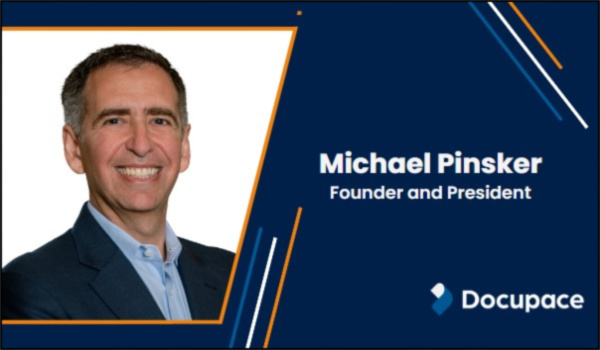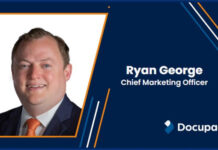Over the last four to six years, there has been a gradual change in how advisors build relationships and service their clients. The change has emanated from regulatory changes driving advisors’ fiduciary duties. For many, their role has become more of an advisor, less a selling role, and focused on providing an outstanding client experience. While regulatory changes will continue to occur, robust advisor tools must also be adaptable to ever-changing market conditions.
The right tools inside the toolkit
Providing advisors with the necessary components and tools to adapt to ever-changing conditions in an ever-changing world starts with basic needs. Needs such as document management or systems to deal with the vast amount of paperwork necessary for your organization’s success and scalability. With the right tools, a firm can scale and survive with the increasing amount of required paperwork.
“With all of the M&A activities happening in our industry where firms are being absorbed and, as a result, tech tools forced on advisors, the need for document management still exists. That’s where Docupace’s RIA Productivity Suite is a key element to the onboarding success of the advisor and clients. Workflows, such as intaking information and effectively processing it, becomes critical.”- Michael Pinsker, Founder and President, Docupace.
For example, an account opening where the client has one or more custodians or clearing houses poses a hybrid situation requiring a hybrid approach to document management. In this instance, you should have a system or platform to support both. Multiple databases require an out-of-the-box offering that allows you to leverage the capability to capture the data from an investor, ensure data is effectively reviewed and approved by compliance, and then passes to the custodian or clearing house. All that must happen efficiently, electronically, and completely formless while incorporating firm-specific forms into the process. We must remember the advisor and client experience in all of this, from onboarding to account opening, seamlessly and quickly for each party in one setting.
Today’s hybrid reality
Some of today’s wealth management organizations may be more technologically advanced, while others are not. A good example would be when you’re dealing with direct business. In some cases, you’ve got to process paperwork at multiple locations, whether at a BD or direct, based on your business model, which may be a hybrid approach. A database makes it easier for you by digitizing the process for the RIAs and the firm. Digitizing the process takes less time, is more accurate, and reduces the ‘Not in Good Order’ items (NIGOs). NIGOs means that the transaction initiated and data captured from the investor information inside your CRM is missing critical information. As a result, you have to go back to the drawing board, which isn’t a good experience for the investor.
“NIGOs are bad for the advisor and their operation because they waste a lot of time, and the advisor has to start all over. That’s the situation our platform helps avoid since we have tools in place that guide the advisor to navigate through the transaction without NIGO situations when the tool understands the compliance aspects of the transaction.”– says Pinsker.
Whether through compliance storage or for various rules and validations, all requirements are built into the platform and made available to the advisors to leverage. That way, the advisors know that wherever information they’ve entered into the system is appropriately reviewed, has checks and balances, and is completed effectively. For firms that are a hybrid model, the system significantly reduces their overall costs.
Integrating tools for enhanced productivity
The main elements built into the RIA Productivity Suite are brought together in an integrated fashion. Regarding integration, the productivity suite communicates natively with other systems like CRM, portfolio management systems, and other essential technologies. The experience for advisors is immersive and easy to use. It enables them to stay focused on the relationship with their clients rather than tied up in the paperwork of servicing clients.
‘Once and done’ data entry is where RIAs must aim with their technology-to have it done once. A perfect example is data entered into a CRM; it gets pushed into and populated in multiple places within the database, such as populated into the form. It also can get populated in the database where the data is stored to be used later for reporting.
“Our philosophy is that data flow should be seamless to the end user; they shouldn’t have to re-enter the data twice, three times, five times. We can help the entire process so that any technology they use is there to support them. Whether it’s pushing or pulling data back into a system such as a CRM, the advisor knows what’s happening with the transaction every step of the way. They see the status right there without doing any extra search, which minimizes the time they spend searching when the technology can automate it,” adds Pinsker.
For example, the technology can automatically send an email to a client from the RIA Productivity Suite, alerting them that critical information is missing to complete an action, such as a transfer. The message alerts the client to click on the link provided within the email to complete an action, for example, uploading a photo of their driver’s license. The steps in the workflow automate client messaging so advisors can easily leverage information in their communications with clients. It is essential to use technology to catch things before mistakes happen and become visible, and create problems in the entire transaction.
Why RIA firms should look at productivity
There are two reasons why RIA firms should look at their productivity to increase efficiencies and reduce costs, which are the goals for any RIA firm. There are many reasons why an RIA firm should consider a Productivity Suite:
- To quickly scale up if the firm is growing without increasing costs
- To create efficient processes for front and back-office team members
- To free up advisors’ time to focus more on relationships versus paperwork
- To do more work with less human capital
- To onboard a new advisor and their clients with less downtime
“It’s a fact that many advisors change from one firm to another, and during that transition, those client accounts have to be re-papered. That’s why having the right tools to help advisors and firms manage the entire transition and client onboarding and account servicing is important. We’ve designed our technology to reduce the advisor’s stress and help them take care of all the paperwork compliantly, obtain the necessary signatures from their clients, and transition that book of business efficiently into the firm,” says Pinsker.
Once the advisor starts interacting with a firm, how the firm uses technology effectively speaks to their culture and quickly validates if the advisor will have access to the right tools to make their life easier. Productivity tools such as Docupace’s Productivity Suite address very complex problems and deploy simple solutions that reduce stress and fast-track processes, which translates into advisors getting paid faster and significant cost-savings to the firm.







